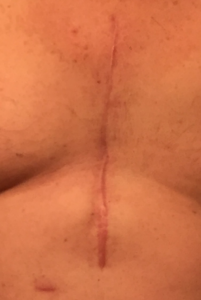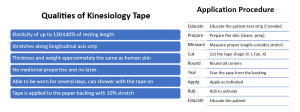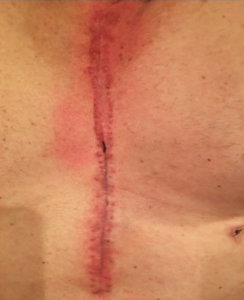Written By: Nicole Scheiman, OTR/L, MHS, DrOT, CLT-LANA, CORE, CES, CKTP
October is Breast Cancer Awareness Month and in observance of this special month, we are highlighting a kinesiology taping technique for scar management!
Individuals who have scars from lumpectomies and mastectomies can benefit from scar management techniques to prevent scar adhesion, decrease the overall width of the scar, improve coloring, provide an improved cosmetic appearance, and prepare them for potential reconstruction.
While our traditional manual techniques for scar management remain appropriate, it is often only completed the 2-3 times per week when we typically see these patients in the outpatient setting. We do our best to teach patients to complete self-management, but the reality is that this doesn’t always happen consistently! So, if we do our traditional techniques in the clinic and follow with the demonstrated taping in our video, our patients get ongoing treatment from the time they leave us until they see us again!
Click the video below for the scar application technique:
Example of Scar Management
Patient was status post coronary artery bypass graft with staples removed just prior to photo.
As soon as incision was able to tolerate manual techniques (this is different for everyone and can take longer for individuals going through cancer treatments) the incision was divided into thirds. The top third was treated with kinesiology taping (see video for technique). The middle was treated with our traditional manual scar management techniques, the bottom third received no treatment.

Results-note the scar width and coloring. The top third healed with not only a better cosmetic outcome, but the scar is smaller in width and if you could feel, you would notice that the scar is mobile meaning it is not adhered, limiting range of motion.
Explore online continuing education courses from Nicole below:
Rehabilitation Considerations for Comprehensive Breast Cancer Care
Rehabilitation Considerations for Head and Neck Cancer
Rehabilitation Approaches to Better Manage Cancer Pain
Visit summit-education.com for more information



Thank you Shirley! I’m so glad this was helpful!
Thank you. This very helpful. My daughter will have a double masetomy in to weeks. I fully loaded and ready.